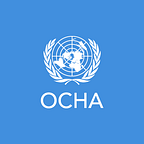Humanitarians help to keep millions of people alive in Yemen
The UN’s humanitarian chief, Mark Lowcock, thanks donors for their support for life-saving humanitarian aid operations in Yemen, while asserting that only a political solution can end the suffering.
By Mark Lowcock
More than three years since the escalation of the armed conflict, civilians continue to suffer horribly in Yemen. More than 22 million people — or three quarters of the population — need humanitarian aid and protection across the country.
This includes 8.4 million people who do not know where their next meal will come from. Another 10 million people could find themselves in the same situation by the end of the year. Since 2015, fighting has driven more than 3 million people from their homes, including more than 2 million who remain displaced today. An unprecedented outbreak of cholera and acute watery diarrhoea has gripped Yemen since April 2017, with over 1.1 million cases.
Given the massive scale of the crisis, the UN and partners are now running the world’s biggest humanitarian operation in Yemen. Every day, brave humanitarians across the country assist people directly impacted by the conflict and other communities in need, often working in rapidly changing and dangerous environments. The humanitarian response has ramped up dramatically in the last year and is reaching all 22 of Yemen’s governorates, from Sa’ada to Aden and Al Maharah.
In May, we provided emergency food assistance to 7.5 million people — more than twice the number of people we were reaching just over a year ago. We also provided water, sanitation and hygiene services that benefited 6.3 million people — a 60 per cent increase since January. The number of people receiving health services has risen by 50 per cent during the same period.
Humanitarians have also been there to provide emergency relief to people fleeing violence in Hudaydah, where escalating conflict since June has forced more than 300,000 people from their homes and raised fears of catastrophe if fighting moves into densely populated Hudaydah city. Three quarters of the people recently displaced by violence in Hudaydah have received basic relief packages containing food, hygiene supplies and other essential goods.
Among the factors that have helped to expand aid operations is our investment in partnerships with organizations that allow us to reach more people in more places. This year, we are working with 169 partners who are the engine of the response. The large majority of them are Yemeni organizations. Our assistance goes out from hubs in Aden, Hudaydah, Ibb, Sa’ada and Sana’a, which allows planning and coordination to take place as close as possible to the people who need help. A sixth hub in Mukalla will open soon.
To deliver at the scale required, humanitarians must also have access across the country, including in areas controlled by different groups, so that aid can be delivered safely and quickly. Since 2015, we have had a system in place with the Saudi-led coalition to communicate the locations of humanitarian facilities and plans for aid distributions, assessments and other activities. This system helps to reduce risks of accidental or incidental harm to aid workers or assets and beneficiaries as a result of military operations by the coalition, which, like all parties to conflict, is obligated under international humanitarian law to distinguish between civilian objects and military objectives, and to take all feasible precautions to avoid and minimize incidental civilian harm. This year, more than 4,700 humanitarian movements have gone through this system. Since 2015, the locations of more than 20,000 sites — including humanitarian premises, schools, health facilities and other critical civilian infrastructure — have been identified and shared. The system also provides a mechanism to discuss concerns and address issues as they arise.
We have also reached more people thanks to the leadership of the Humanitarian Country Team inside Yemen, who work to engage all relevant stakeholders to ensure that aid can reach people who need it across the country. Unfortunately, our colleagues in Yemen continue to face far too many restrictions on their work, particularly in the north. Their ability to expand relief operations despite these challenges demonstrates the extraordinary ability, dedication and hard work that they bring to the task.
Finally, none of this life-saving work would be possible without generous and flexible donor support. The UN-coordinated Yemen Humanitarian Response Plan (YHRP) for 2018 has received more than 60 per cent of the $2.96 billion requirements.
A large part of this funding came early in the year through a $930 million contribution to the UN from the Kingdom of Saudi Arabia and the United Arab Emirates in support of the YHRP. This funding was unearmarked, meaning UN agencies are using it where it is needed most, based solely on humanitarian need and in line with the YHRP strategy. The United States, Kuwait, the United Kingdom and Germany are among our other generous donors this year.
These are all remarkable successes, which bolster the UN and partners’ commitment to stay and deliver. I thank the generous donors who are supporting us and invite others to fill the remaining gaps in this year’s appeal.
Despite our achievements, humanitarian assistance alone will not be enough to resolve the crisis in Yemen. For that, we urgently need a political solution. I call on all parties to continue to engage with the Secretary-General’s Special Envoy to achieve such a settlement as quickly as possible. I also renew my call for all parties to respect international humanitarian law, including the obligation to protect civilians and civilian infrastructure, and to facilitate humanitarian assistance.
Mark Lowcock is the United Nations Under-Secretary-General for Humanitarian Affairs and Emergency Relief Coordinator.
